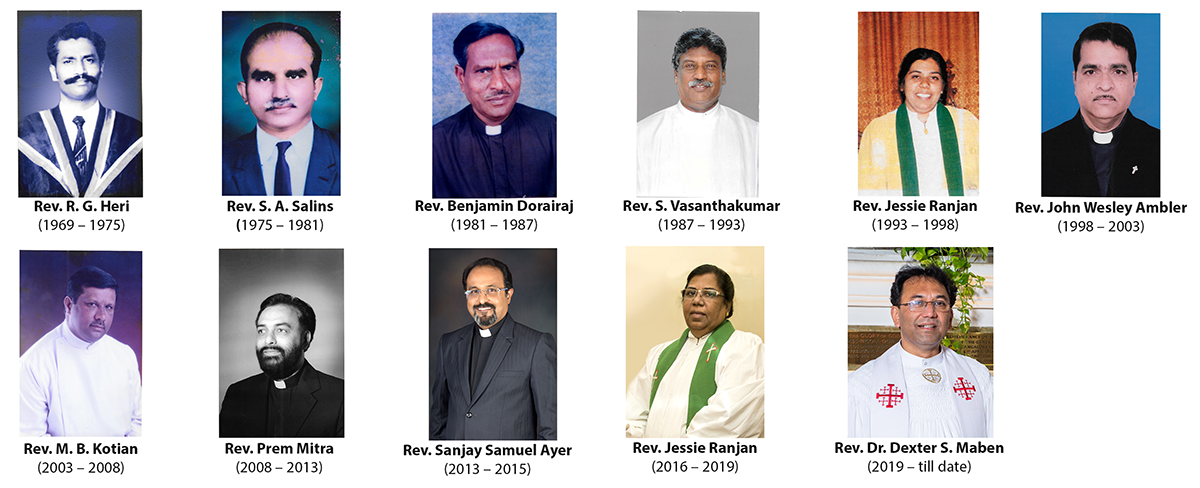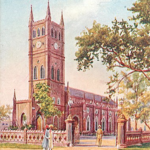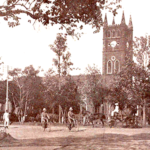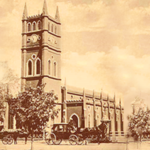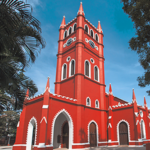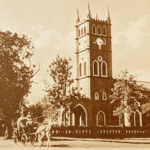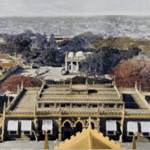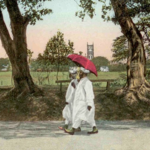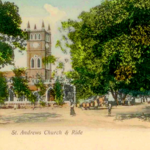The Scots in india
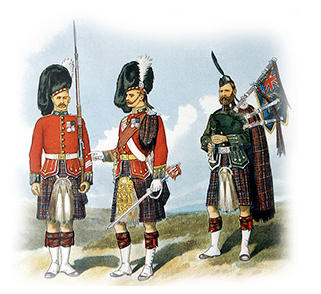
In the year 1707, the independent Kingdom of Scotland united with England. By this political development, the Scots gained access to the East India Company, which was well established about a century ago. Thus, a large number of Scots joined the company as ‘writers’, they were followed by thousands of Scottish traders, engineers, medical doctors, teachers, missionaries and even tea and indigo planters. A considerable number of Scots served in the British army in India as soldiers and officers. A Scottish highlander regiment also served in India. The Scots entered into the civil service in this country. In fact, the first three Governor Generals of British India were Scots.
The Scots being socially and culturally different from the English, and with the Presbyterian background (rather than Episcopal), they felt the need to build a ‘Kirk’ of their own.
Thus was established St. Andrew’s Kirk at Madras in the year 1821
St. Andrew's Church, Bangalore
Around early 1860’s Bangalore had a sizable number of Scottish residents, as well as Scottish soldiers and officers. They too felt the need for a ‘Kirk’ of their own.
Scottish men and women met at Trinity Church on the 22nd November 1863 and St. Andrew’s Church began in their minds. Fortunately for them, Sir General James Hope Grant who hailed from Perthshire, Scotland, was stationed in Madras. He took the initiative to raise funds to a large extent to build a Kirk at Bangalore. He also helped the Scots get suitable land for the proposed Kirk on what is now called Cubbon Road in the Cantonment area of Bangalore.
The foundation stone of St. Andrew’s Church was laid on the 22nd November 1864. The splendid St. Andrew’s Church as it stands today, was opened for public worship on the 22nd November 1866. It was called “Red Kirk” as the external structure was painted red. The church was named after the Scottish Patron, Saint Andrew. The church was consecrated by Rev. Stewart Wright on the 18th of November, 1866. The large Scottish population at a glittering ceremony at Bangalore rejoiced when Lady Grant laid the Foundation Stone for the proposed St. Andrew’s Kirk, on 22nd November 1864. The church was built to accommodate 500 people.
Worship services and ministerial continued, under the Church of Scotland with mostly the Scottish regiments serving in Bangalore. Presbyters were deputed regularly by the Church of Scotland. “It was then known as St. Andrew’s “KIRK”, a westernised church with Scottish customs, classical Scottish square dancing, western music, celebrating St. Andrew’s Day, Burns’ Night and so on. The soldiers would arrive in their colourful kilts, with their skirling bagpipes. The soldiers were allowed their traditional kilts, exempted from British Army dress code. They were called ‘kiltie soldiers’.” Once at the church, each would place their gun in the gun rack provided for them at the entrance and then enter church.
After the complete independence of the Indian Church by the formation of the Church of South India (CSI) in the year 1947, as the influx of regimental soldiers receded with permanent transfers and so on, the congregation members worshipping in the church were eager to find their identify with the Indian main stream of the post-independence churches by affiliating themselves with the Church of South India.
Accordingly, as recorded in the minutes dated 1st February 1959 of the Kirk Session of St. Andrew’s Church, it is found that Bishop N. C Sargant of Mysore visited the Kirk Session in December 1956, and had a dialogue with the members regarding the merger of the church with the CSI, with the assurance that there would be no change in the form of worship and traditions, and eventually, St. Andrew’s Church joined the CSI in September 1959. Rev. P. J. Child, the Presbyter, then known as the ‘Moderator’ of the church, was in charge of the congregation. Subsequent to this, during the tenure of Rev. R. W. Rentoul in the year 1963, the first Pastorate Committee was constituted with six members by election from the total strength of 113 communicant members of the church, at a nominal agreement of one Pastorate Committee for every 20 communicant members plus one nominated member. Four elders of the Kirk Session who had been ordained for life remained as life founder members of the Pastorate Committee. Thus the Administrative Committee of the church, until then known as the ‘Kirk Session of St. Andrew’s Church’, shed its western nomenclature, to be renamed to function as the “Pastorate Committee of St. Andrew’s Church”, and the church gradually became one of the churches of the Karnataka Central Diocese with a Bishop as her head for all administrative hierarchy – different from the Presbyterian discipline, relieved formally from the Colonial and Continental Committee of the Church of Scotland, which was governing four such St. Andrew’s Churches in India at Calcutta (Kolkata), Bombay (Mumbai), Madras (Chennai), and including that in Bangalore.
Rev. Robert W. Rentoul, the Presbyter-in-charge of the church had played a prominent role in shaping the destiny of the church. Several revival activities were undertaken during this period, as a Bible Study group, regular Choir practice, reorganisation of Sunday School, the first election of the Pastorate Committee, geographical allocation of duties of P.C members were given district wise, Youth Fellowship, Women’s Fellowship, conspicuous changes in the Order of Worship were undertaken. The period had also seen a radical change in the worship bifurcating the services into Kannada and English with the introduction of worship in local language at the instance of a letter from their Bishop Rt. Rev. N. C Sargent, of course with the firm declaration by the Pastorate Committee that “irrespective of their languages, all who worship here should be members of one congregation of St. Andrew’s with provisions to safeguard the interest of the English speaking minority.
On a later occasion in the year 1967, over a clarification of the same issue, recorded thus in one of its minutes:
“It reaffirms its belief expressed at the start of the services in Kannada in November 1965, that we should remain one Pastorate with the same minister and Pastorate Committee for the whole pastorate and that we should act as one congregation in all things. The provisions of worship in two languages separately did not mean that we were two congregations in any respect other than for the purpose of statistics and representations. The election would thus be held jointly, with all voters, voting for all candidates”.
St. Andrew’s Church has been standing tall as the symbol of the spirit of the people, an edifice of character of strong Christian faith and a landmark in the city. Over 158 years have passed since the Scottish Regiment began worshipping in this monumental church and now the community has grown to encompass a large multi-denominational St. Andrew’s family, bearing a testimony to the grace of God and the faith of all its members, as it has seamlessly integrated a multilingual Indian population into its fold. Grand celebration continued through the year with many activities beyond the church. A special Worship Service was held on Saturday, 29th November, 2014 to Celebrate St. Andrew’s Day. The Madras Sappers band played to enthral the gathering during dinner.

Thereafter many new Ministries were added, giving the growing congregation the opportunity to serve the Lord with gladness. Some of the new ministries that were added are Care for the Elderly, Young Couples Fellowship, Education and Professional Networking Committee, expanding beyond the erstwhile Scholarship committee, and Media and Communication committee, which played a huge role during the Covid lockdown from March 2021 to early 2022. Worship Services went on as usual during the lockdown period, with the services being telecast online. This practice still continues and worship services are watched by people across the globe.
St. Andrew’s church is known for its restoration projects. The church interiors and structure are a testament to this fact. The 150 year old Parish hall was restored and rededicated on the 2nd of October 2022, marking 150 years since it was built as St. Andrew’s Girl’s School, which was started in January 1878. Today all the ministries of the church use the Parish Hall and all the rooms within for meetings and various activities.
The church with its long period of history for nearly one a half century presents to us today a look of long and deep-rooted tradition with its community committed to the prime goal of worship as one congregation in unity ever through, with more emphasis on outreach work, mission and evangelism through social activity in the latter years to project the image of Christ through the friendly interaction with the present context of the society around, ever heralding its faith and bearing witness to: “Thy hand O God has guided Thy flock from age to age”
St. Andrew’s Church is part of the Church of South India, Karnataka Central Diocese. For More information about the Diocese, click on – https://csikarnatakacentraldiocese.org/
Succession List of Presbyters-in-charge
| Presbyters-in-Charge | |
|---|---|
| Rev. Stewart Wright | 1864 – 1866 |
| Rev. W. A. Liston | 1868, 1874 – 1979 |
| Rev. Alexander Walker | 1868 – 1971, 1872, 1874 – 1877 |
| Rev. A. Clifford Bell | 1871 – 1874 |
| Rev. James Jollie | 1879 – 1881, 1884 – 1887 |
| Rev. John D. Morrison | 1881 – 1884 |
| Rev. James N. Ogilvie | 1887 – 1890, 1892 -1893, 1894, 1895 – 1897 – 1898 |
| Rev. Robert H. Stevenson | 1890 – 1892, 1893 – 1894, 1901, 1904 |
| Rev. T. Scott | 1899 |
| Rev. John Heron | 1899 – 1901, 1904 – 1907, 1913 – 1914 |
| Rev. A. W. Mackenzie | 1906 – 1907 |
| Rev. J. D. Mitchell | 1908 – 1911 |
| Rev. J. G. Philip | 1911 |
| Rev. J. H. H. Macniel | 1920 – 1923 |
| Rev. D. F. Mackenzie | 1923 – 1925, 1928 – 1930 |
| Rev. G. C. Macpherson | 1925 – 1926 |
| Rev. G. M. D. Short | 1926 – 1928, 1931 – 1935 |
| Rev. S. W. Cameron | 1930 – 1931 |
| Rev. Dr. A. Moffat | 1933 |
| Rev. K. Mackintosh | 1935 – 1936 |
| Rev. J. W. Ingram | 1935 – 1936 |
| Rev. James P. Reid | 1936 – 1939 |
| Rev. L. Mac Edward | 1939 – 1940 |
| Rev. R. W. Matheson | 1942 – 1946 |
| Rev. G. Buchanan | 1946 – 1947 |
| Rev. A. J. Mac Donald | 1947 |
| Rev. Brady | 1947 |
| Rev. R. E. Lee | 1947 – 1949 |
| Rev. Lewi J. Thomas | 1950 – 1955 |
| Rev. Dr. A McLeish | 1955 – 1958 |
| Rev. Dr. Henry Sedlo | 1955 – 1958, 1959 |
| Rev. P. J. Child | 1959 |
| Rev. W. Park Rankin | 1960 – 1961 |
| Rev. David Mackie | 1961 – 1963 |
| Rev. R. W. Rentoul | 1963 – 1969 |
| Rev. J. Mullins | 1969 – 1971 |
| Rev. R. G. Heri | 1969 – 1975 |
| Rev. S. A. Salins | 1975 – 1981 |
| Rev. Dr. K. C. Abraham | 1975 – 1976 |
| Rev. Benjamin Dorairaj | 1981 – 1987 |
| Rev. S. Vasanthakumar | 1987 – 1993 |
| Rev. Jessie Ranjan | 1993 – 1998 |
| Rev. John Wesley Ambler | 1998 – 2003 |
| Rev. M. B. Kotian | 2003 – 2008 |
| Rev. Prem Mitra | 2008 – 2013 |
| Rev. Sanjay Samuel Ayer | 2013 – 2015 |
| Rev. Christy Rajkumar | 2015 – 2015 |
| Rev. Satish Timothy Paul | 2015 – 2016 |
| Rev. Jessie Ranjan | 2016 – 2019 |
| Rev. Dr. Dexter S. Maben | 2019 – till date |
Scottish Presbyters
(Only Available Photographs)
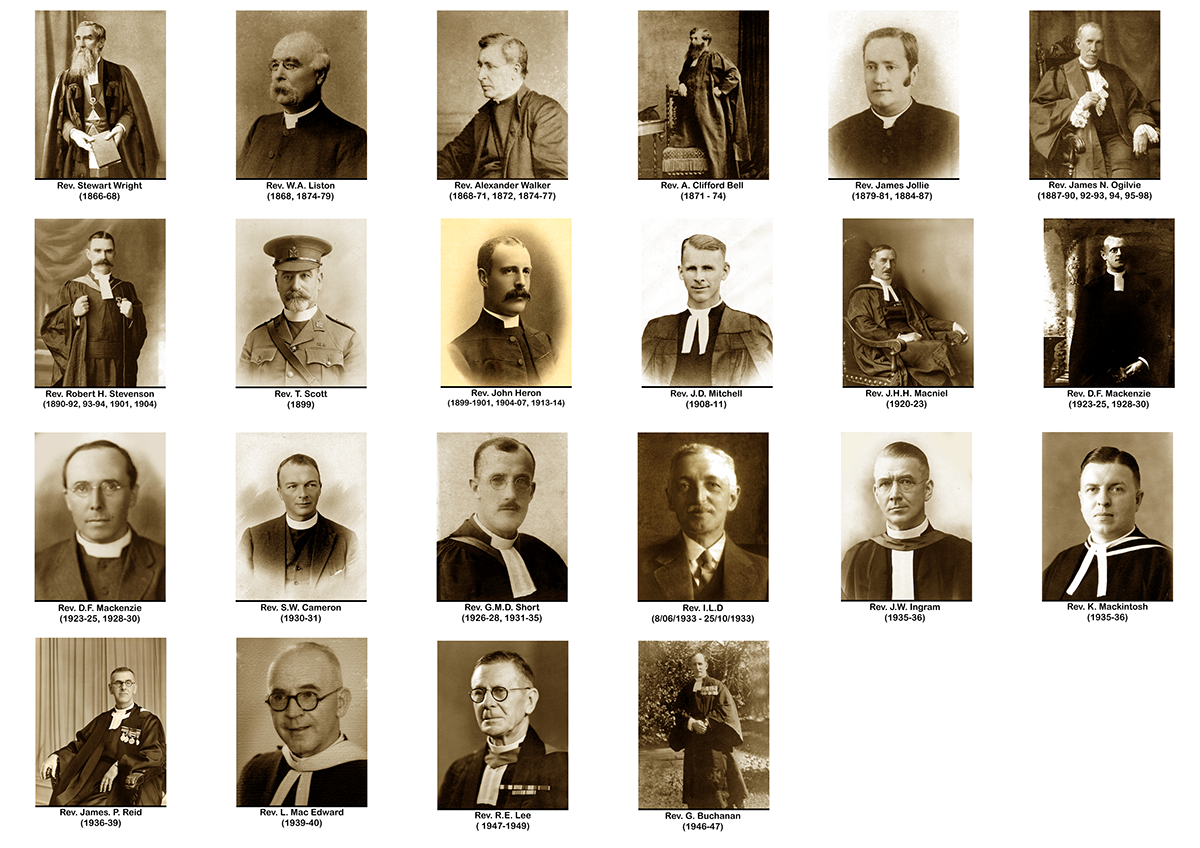
Indian Presbyters
